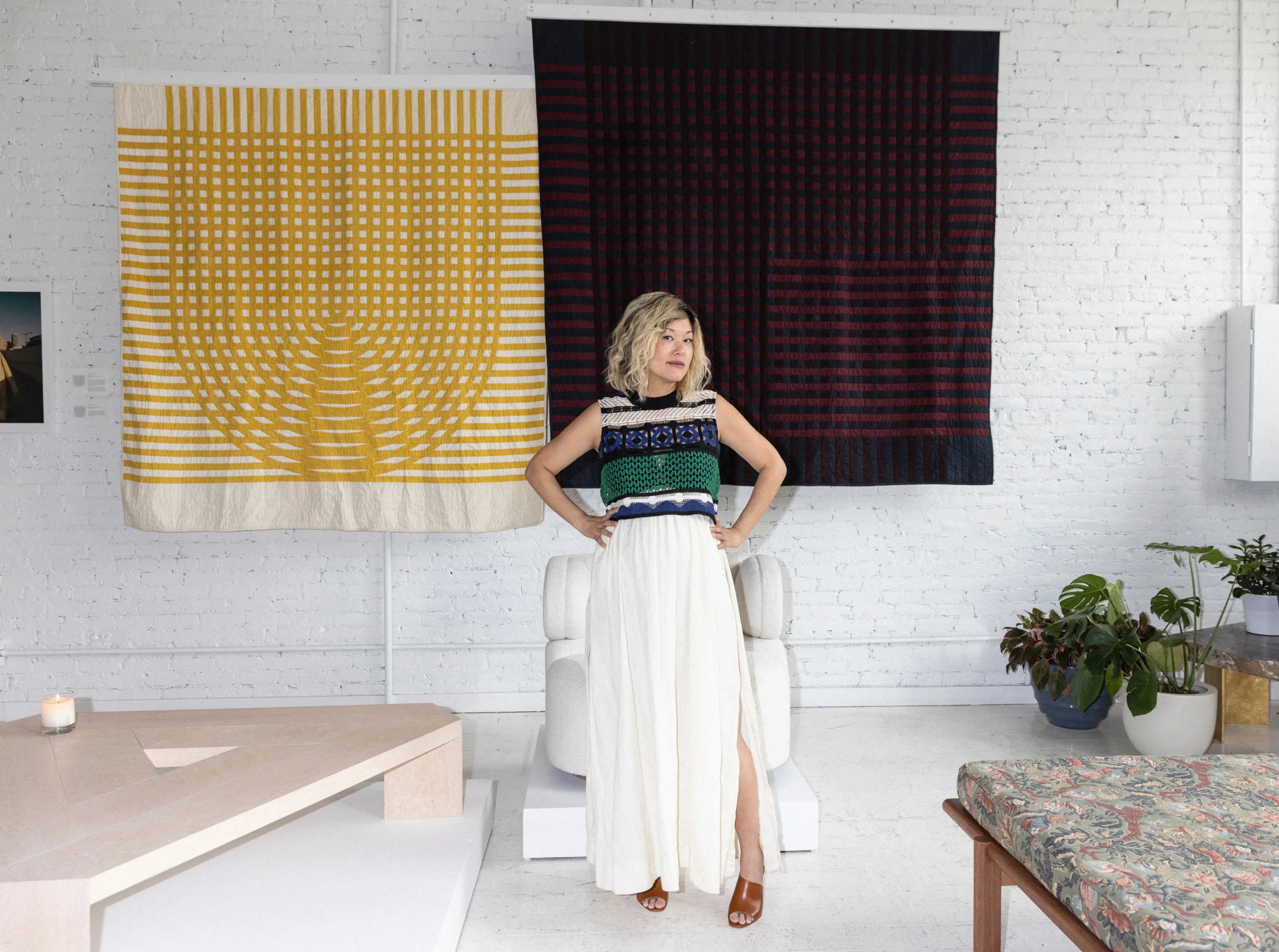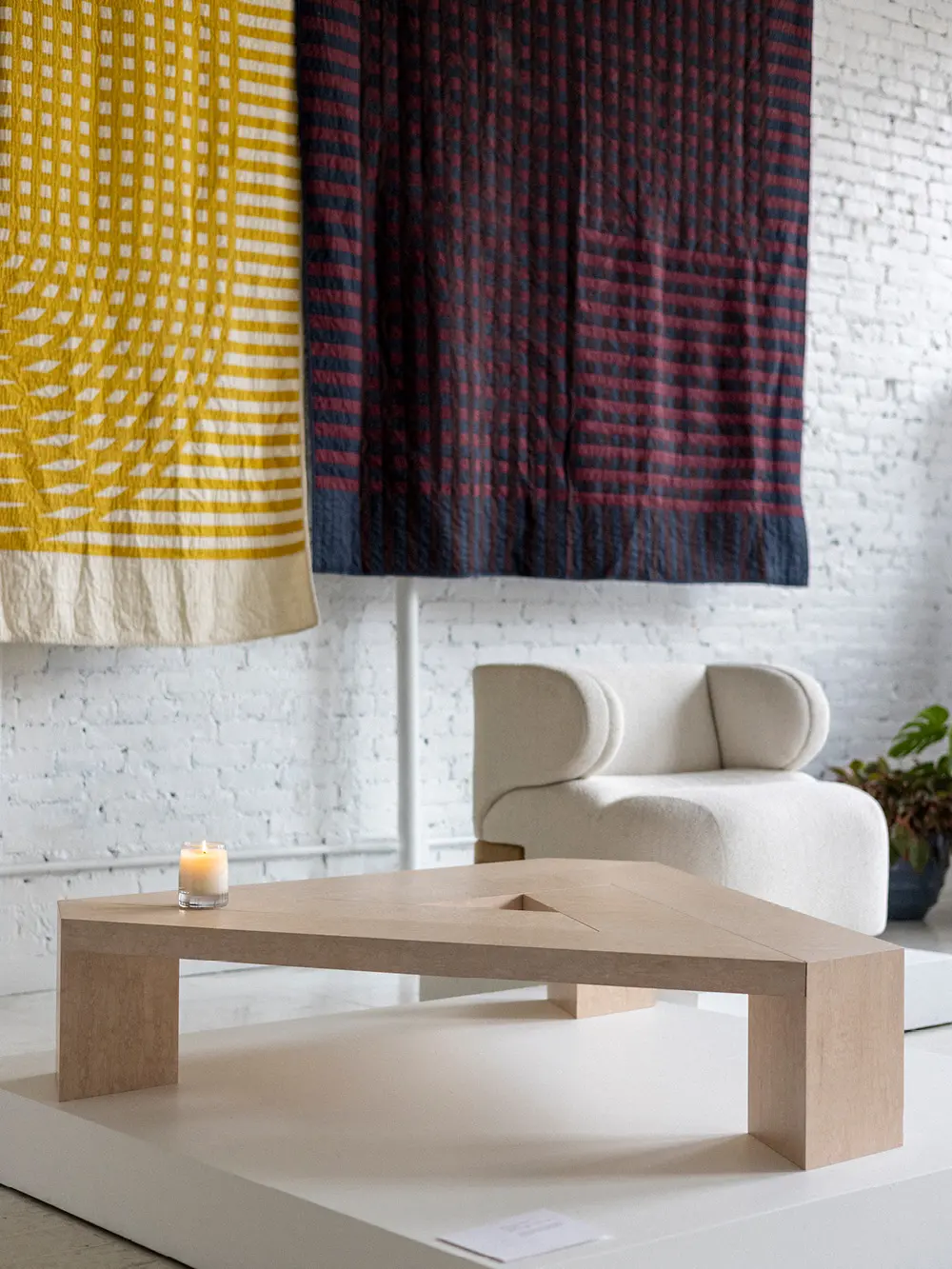Shop Talk
Colony’s Jean Lin
December 14, 2021
Jean Lin is a visionary with her eyes rooted firmly in the present. Writer and editor Dickson Wong caught up with the curator and gallery founder on the heels of her latest show.
Since founding Colony, a gallery and creative studio aimed at uplifting independent makers and designers, curator Jean Lin has steadily cultivated a following for its group exhibitions and an unconventional co-op model that prioritizes community ahead of profit: In place of a standard showroom or gallery business model, in which a hefty commission is collected from sales, Colony charges its designers a monthly co-op fee and takes a much smaller commission.
It was Lin’s strong sense of community, in fact, that first kickstarted the idea to start Colony, located on a second-floor walkup on Canal Street in Downtown Manhattan. In the aftermath of Hurricane Sandy, in 2012, Lin commissioned a group of local designers to create objects using debris from the storm for a special auction in an effort to raise proceeds for charity. Works included a branch light by Lindsey Adelman, cast-acrylic water bottles by Joe Doucet, and a reclaimed-wood drawer box by Volk Furniture. In organizing the show, one of Lin’s many challenges was locating a space to showcase the pieces, which prompted her to dive head-first into creating her own showroom-gallery hybrid.
More recently, Lin sought to buoy a sense of community amid the ongoing pandemic. Last month, she hosted JOIN, Colony’s latest group exhibition with works by Hiroko Takeda, Paolo Ferrari, and Bec Brittain, among others. “There are so many elements evoked by the title — tactile, emotional, and intellectual,” Lin says, from joinery techniques to the notion of community. “It felt very apropos as our first show back.” With the recent waves of anti-Asian violence, Lin has also become acutely aware of her role and opportunities that having such a platform can provide. “People don’t often ask about what it’s like being a woman, Asian, and a business owner in Chinatown. But I think it’s important to have that be part of the conversation.”
With an expansive, non-linear career that includes stints in social work, fashion, interiors, editorial, trend forecasting, lecturing, and consulting, Lin herself has come to embody the sort of innovative entrepreneurial spirit that resonates with many of today’s emerging and independent talents looking to cut their own path. For Lin, recognizing the challenges designers face and embracing their needs has, in many ways, absolutely paid off.

QFrom the beginning, Colony set itself apart from other galleries with a focus on community and fostering designers.
ASo many designers that are here now were part of that beginning mission. They really closed their eyes and jumped off into the pool with me: Hiroko Takeda, KWH, Vonnegut/Kraft, Moving Mountains. Allied Maker was a big one that has been with us from the beginning. They're all special to me, but I feel really grateful for the ones who were able to see the vision before it actually manifested. There are so many stories like that where I feel the community thing is a really nice fuzzy feel-good story, but it's also what makes it worth it.
QTell us a little about some of the early challenges you faced with Colony that really required you to take leaps of faith. What were some milestone moments?
AI mean, people told me it wasn't going to work — a lot of people I respected and care about. When you see it on a spreadsheet, the numbers were just not there. Maybe it was stupidity, I don't know, but I felt like if we did something really special, people would want to work with us. I sound like a bright-eyed idealist when I talk about it now, but I just had to keep going and believe it was going to work. Our first big client was architect Michael K. Chen. He had an amazing project uptown, and a client who wanted to hire a smaller firm for whom the project would really make a career impact. Michael came in and expressed that he really wanted to furnish the space with work along the same kind of sentiment, saying, “I have this 9,000-square-foot house I have to furnish, I want to do it with as much stuff from you as I can, I want to work together on this, and I want your opinion.” At the time, Colony was literally an empty room. No one knew where we were, on a second-floor walkup on Canal Street. It made me believe there was a market out there for Colony. It's little steps like that which gave me confidence to push it up the hill just a little bit more.
QWhat are you seeing from emerging designers that’s exciting you right now?
AWhen I taught at RISD this past spring, there was a ton of interesting work that embraced a return to the tactile and why we all fell in love with design — that emotional reaction when you see something really beautiful. I don't think everything should be stuck on the screen. A lot of this work has to be seen in person. It has to be experienced, and you feel it when you're in the room — not just physically, but emotionally.
“A lot of this work has to be seen in person. It has to be experienced, and you feel it when you're in the room — not just physically, but emotionally.”
QAs a creative entrepreneur, you’ve tackled many hurdles. With the ongoing pandemic, what has helped you focus on running the gallery?
AThe pandemic closures were really scary. At one point, I definitely thought, “Well, that's the end of Colony.” Our landlord is a Chinese family. They didn't want to see me have to move out right away because they knew that I couldn't do business, so they deferred my rent without even me having to really ask. A lot of things like that kind of made it possible the first few months. Then, business started to really grow — that was the most unexpected thing. It felt like a boom all of a sudden. We also do consulting; it's part of the business. We do interiors, marketing and communications, art direction. And it just felt fortuitous that we signed a few big projects that summer. Then, I knew we would be okay.
QWith the gallery adjacent to Chinatown, what impact has it had on you as an Asian American female business owner?
AWith the recent wave of anti-Asian violence, I felt weakened. As a business owner in the crux of Chinatown, Soho, Tribeca, as an Asian woman, I'm trying to find better ways to celebrate the fact that this is a women-run, Asian American–run business that's right here. I've become more aware of our position, my own personal identity, and the way we confront this type of adversity — whether it comes to social, sociopolitical, or socioeconomic adversity. I've struggled with my racial identity for my whole life; wrestled with it and found my voice, found my comfort with my own self as an Asian American woman. It's very personal, and it's an internal thing we have to deal with. But I want to bookend this whole conversation with positivity: We are still here. We're thriving, and we're better than we have ever been.
QWhat advice would you give to people hoping to start their own design venture now?
AYou have to identify the goals you want and find the steps to reach them. You can't possibly set out to change the face of independent design. You can't possibly set out to do things that are so big they don't have real actionable items that you can work towards. Find the goals that are actionable. The only way that I was able to accomplish anything was to say to myself, “See that goal on the horizon? That's the one I want to reach. I don't know how long it's gonna take me, I don't know what you know, I don't know if I can, but these are the things I have to do now to get that much closer to it.”

Dickson T. Wong is a writer and editor based in Brooklyn. They consult on content, commerce strategy, brand marketing, and partnerships.
Editor: Aileen Kwun
Photography: Jonathan Hökklo
